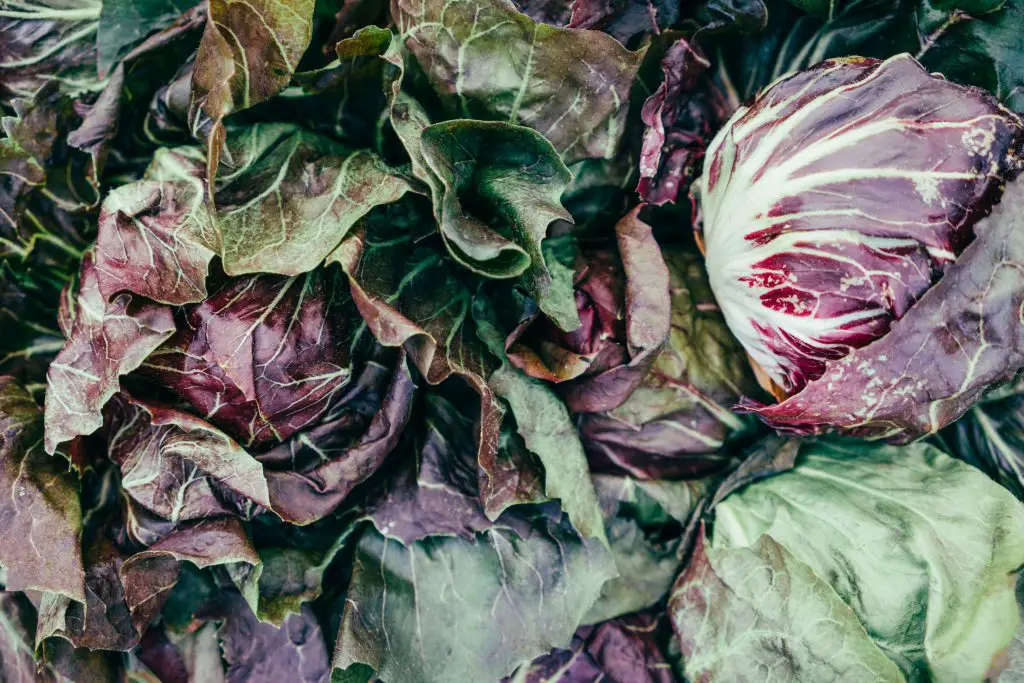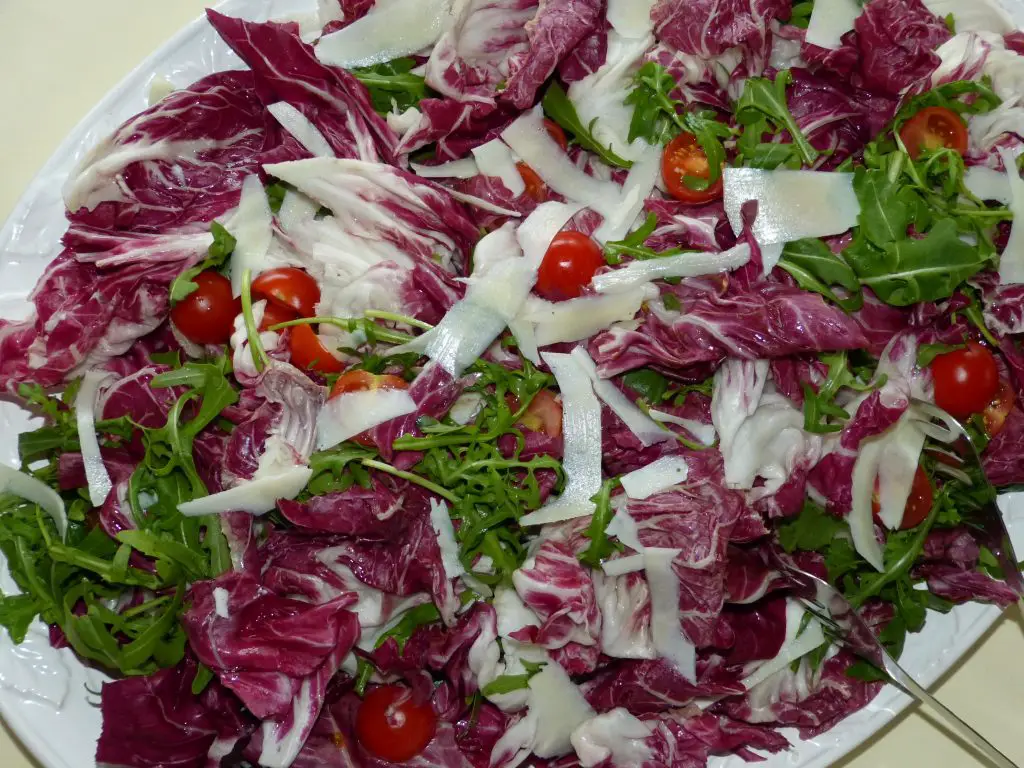Is Radicchio Easy To Grow? Radicchio is a form of Leaf Chicory, which is sometimes referred to as Italian Chicory, because of its common use in Italian cuisine. It has a bitter, spicy taste, which mellows if it is grilled or roasted.
The plant was first cultivated widely in Italy in the 15th Century, where it was grown as a leaf vegetable (in a similar way to a Cabbage). Radicchio has colorful White-veined Red leaves that form a head. The characteristic Red leaves, only reveal themselves when the outer Green leaves are removed. This occurs, because lack of light inhibits Chlorophyll production, causing the plants to lose their Green pigmentation.
Radicchio is a frost hardy vegetable that is easy to grow and will produce an excellent harvest, when planted at the ideal time, late Summer. While many Radicchio seed packets state that it can be sown in Spring, as well as Summer, Spring sowings generally produce smaller hearts that have a tendency to bolt, before the heart is fully developed.
The video by Charles Dowding, a renowned market gardener with 35 years experience, discusses, in depth, the ideal time to plant Radicchio. Additionally, on his website, he has a detailed month by month sowing time line that includes a range of vegetables, https://charlesdowding.co.uk/sowing-timeline-for-vegetables/.
How To Grow Radicchio
Plants are best established by direct sowing into soil or in modular trays, in January (July in the northern Hemisphere). However, if you want to try for a Spring harvest, it is recommended that seeds be planted 4 weeks prior to the last frost, undercover. The reasons for this, is that it reduces the chance of the Radicchio bolting before that head is fully mature, in late Spring.
If you need to purchase seeds I would recommend visiting Seeds Now if you live in the US as they are relatively cheap and specialise in heirloom seed varieties. In the UK try visit Thompson and Morgan as they have a very wide range of seeds.
Seeds should be planted at a depth of approximately 1 to 2 cm and watered well. The seedlings will take between 4 and 6 weeks to get large enough to plant out in the garden, they will typically reach 3 to 4 inches high by this time. The seedlings should be planted 40 cms (16 inches) apart, in a moist rich soil. The position ideally should be sunny, as it will increase the growth rate however, Radicchio will tolerate shady positions within the garden.
During the growing season, ensure that the beds are kept weed free. This is important because weeds will compete with Radicchio for water and nutrients. The simplest way to maintain a weed free bed, is to use the No Dig method, which requires a 5 to 10cm (2 to 4 inches) thick layer of compost to be added to the surface annually, usually in Autumn and Winter. This will feed the soil and suppress weeds throughout the year. To learn more about this method, go to https://planyourpatch.com/how-to-prevent-weeds-from-growing/.

During the growing season, ensure that the Radicchio remains moist by regularly watering the plant. If using the No-Dig method, no additional fertilisation is required.
The Radicchio will take approximately 90 to 120 days to reach maturity however, the Green outer leaves may be harvested at any stage. The outer foliage will be Green and loose, to check that the heart is ready to be harvested, squeeze it with your hand. If it feels firm, it is ready to be harvested. Peel back the head to reveal the Red heart.
It is important to note that Radicchio is a hardy plant that will tolerate frosts, as such, there is no need to rush the harvest too much as the weather worsens. It is only when the temperatures reach -4°C (25°F) or below, that damage to the heads starts to occur.
How To Store Radicchio
Radicchio is best stored in a perforated plastic bag in the vegetable crisper section of the refrigerator, for 3 to 4 weeks. If Radicchio matures in cool or cold weather, it will hold in the garden for several weeks before needing to be harvested.

Types Of Radicchio
There are five main types of Radicchio. The most familiar type is Radicchio Di Chioggia, which is spherical in shape. Well known types include Palla Rossa, and Rossa di Verone.
The second type is Radicchio di Treviso produces an oblong shaped heart, which has longer stems that are more pronounced. These types of Radicchios are particularly popular in Italy, and are best eaten as a grilled vegetable. The process of cooking reduces the level of bitterness present.
Radicchio di Castelfranco is a variety that has larger and softer leaves. These leaves are a creamy Yellow colour with specks of Red. Unlike other varieties, the Lettuce size heart unfolds in a similar way to a flower. The leaves are more tender than other varieties and tend to be eaten raw in salads.
Radicchio di Puntarelle and Radicchio di Tardivo are the least common varieties grown, appearing only occasionally at farmers markets. Both of these varieties require significantly more effort to produce, as they require forcing and blanching in a similar way to Rhubarb.

